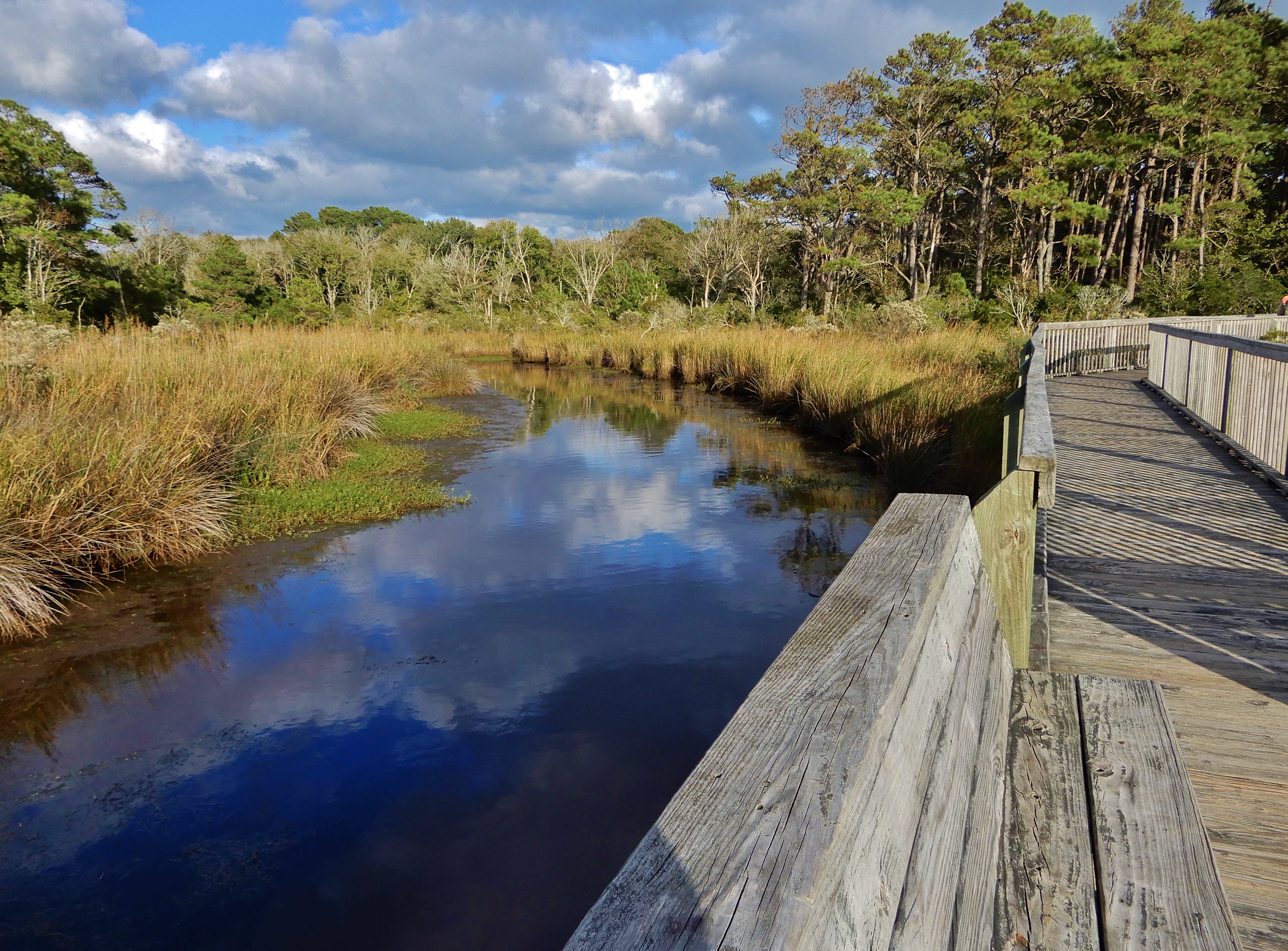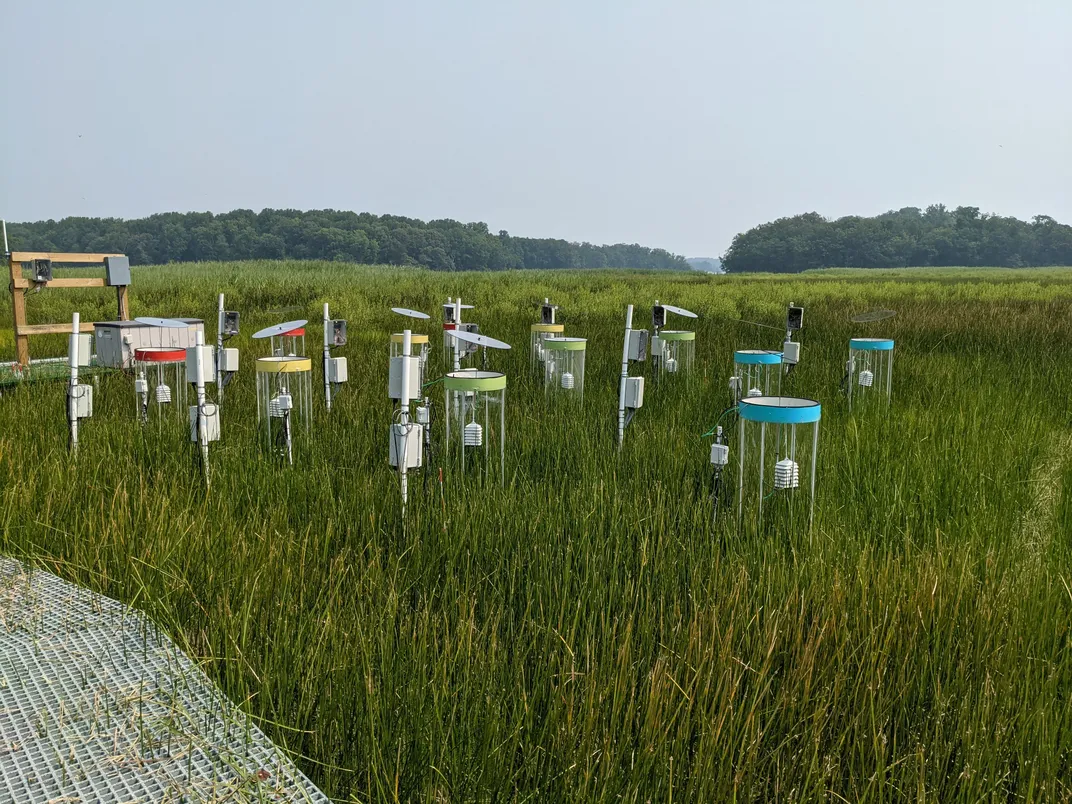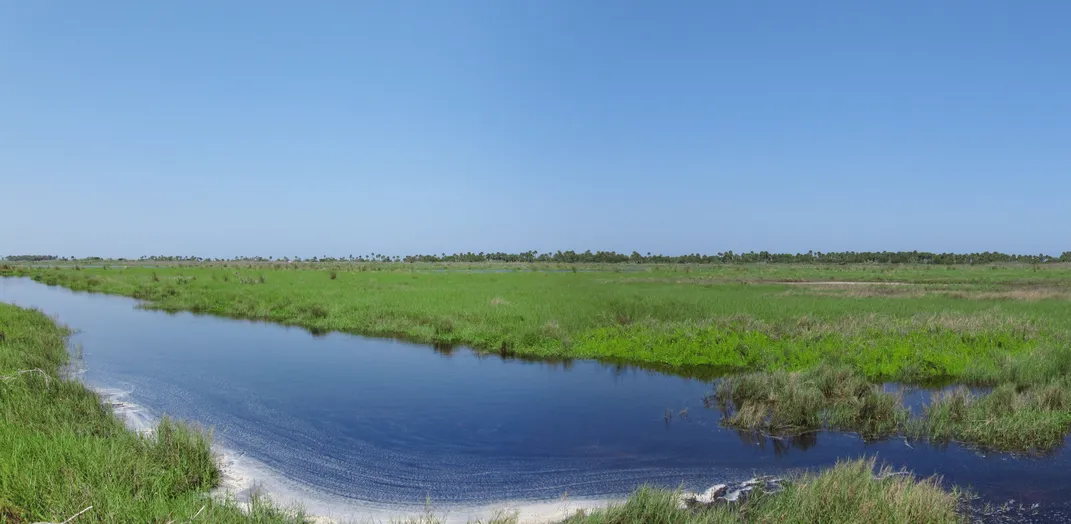SMITHSONIAN ENVIRONMENTAL RESEARCH CENTER
Hot, Fresh & Flooded: These Wetlands Spew Out the Most Methane
Your local wetland could send hundreds of tons of planet-warming methane into the atmosphere every year. Or virtually none.

Your local wetland could be sending over 500 metric tons of methane into the atmosphere every year, per square mile. Or virtually none. It’s a bit of a mystery—one that’s been troubling climate scientists for decades. But a new report published this week is helping nail down which wetlands are more likely to be methane bombs.
Methane is one of the most powerful greenhouse gases on the planet. In a single century, it can warm Earth up to 45 times faster than the same amount of carbon dioxide. And wetlands are one of the planet’s biggest natural sources of it. At the same time, societies rely on wetlands for many things, including fighting climate change by trapping carbon dioxide. It’s estimated coastal wetlands can bury more carbon per unit area than even forests.
But the frequent methane leaks have proven problematic. And they’ve made it hard to pin down how much carbon wetlands can actually store as the world tries to keep global warming below a 1.5° Celsius (or 2.7° Fahrenheit) increase.
“We have a lot of information on the processes that create methane in tidal wetlands,” said Jim Holmquist, a wetland ecologist at the Smithsonian Environmental Research Center (SERC). “However, it is all limited to individual sites, studies and points in time. Putting all of these individual studies together helps us understand the major determinants of methane emissions….[A]nd it will help us prioritize tidal wetland restorations that lower methane emissions.”
Holmquist co-authored the new report, published Sept. 5 in the journal Global Change Biology. It was part of his work with the Coastal Carbon Network—a global community of scientists dedicated to understanding “blue carbon,” the carbon stored in wetlands and other coastal ecosystems around the world.

For this report, the team looked at data from wetlands in the lower 48 states of the U.S. They compiled existing methane measurements taken via two methods: experimental chambers on the ground and “eddy covariance” towers. Experimental chambers are a common sight in wetland research, because they're relatively cheap and easy to deploy. However, they almost always rely on people to take measurements manually, which makes it easy for a big event to get missed. The towers had the advantage of taking measurements more continuously. In total, the report covered 109 sites—100 sites with chambers and nine tower sites.
The biggest factor that protects a wetland from emitting methane is how salty it is. Wetlands whose water was at least 1.8% salt—about half as salty as the ocean—emitted practically zero methane overall. That’s because saltier wetlands have more sulfate in their soil porewater. That favors soil microbes that don’t emit methane and makes life extremely difficult for microbes that do.
“In saltier wetlands, microbes that thrive on sulfate (a component abundant in seawater) compete with microbes that produce methane for the same organic matter,” said lead author Ariane Arias-Ortiz, a scientist at the Universitat Autònoma de Barcelona. “But because using sulfate to break down organic matter is more energetically favorable than the process that produces methane, the sulfate-reducing microbes outcompete the methane microbes.”
/https://tf-cmsv2-smithsonianmag-media.s3.amazonaws.com/filer_public/c6/ec/c6ecb7bf-dd25-48fe-a6b0-6c2a3eca40c0/ariane-arias_ortiz_credit_daphne_szutu.jpg)
Wetlands with fresher water, on the other hand, were all over the place. The hottest, freshest wetlands—those with 0.5% salt or less, and an average daily maximum temperature of at least 78° Fahrenheit—emitted the most methane. Freshwater wetlands that were cooler, but flooded frequently, also emitted more methane. That said, the flooded-but-cooler wetlands didn’t emit half as much as the hot ones. Freshwater wetlands that weren’t hot or prone to flooding emitted barely any.
Hotter temps stimulate the methane-producing microbes and give them more food, because organic matter decomposes faster when it’s hot, said Arias-Ortiz. Flooding also favors methane production because it keeps oxygen away, according to co-author Brian Needelman, a soil scientist at the University of Maryland.
“There’s one thing the microbes that make methane hate even more than salt—oxygen!” Needelman said. “If a wetland doesn’t flood enough to stay full with water, oxygen will enter from the air, and the methane leak stops.”

However, methane’s predominance in freshwater wetlands may be good news for the climate—because it points to a clear solution. Over 1 million acres of U.S. wetlands have been “artificially freshened.” Dams, dikes or other impoundments have cut them off from the sea. Restoring those wetlands to their original, salty state could slash greenhouse gas emissions as much as taking 198,000 cars off the road, Holmquist found in an earlier study.
“Because freshwater wetlands emit more methane than saltier ones, these [artificially freshened] wetlands are technically a human-caused methane source,” Holmquist said. “Reconnecting tidal flow not only reduces greenhouse gas emissions, but can have many other benefits for fish passages, water quality and the long-term resilience of wetlands to sea-level rise.”
The full report is available at https://onlinelibrary.wiley.com/doi/full/10.1111/gcb.17462. Raw data from the wetland chambers is also available as part of a free, open-access database, courtesy of the Coastal Carbon Network.

